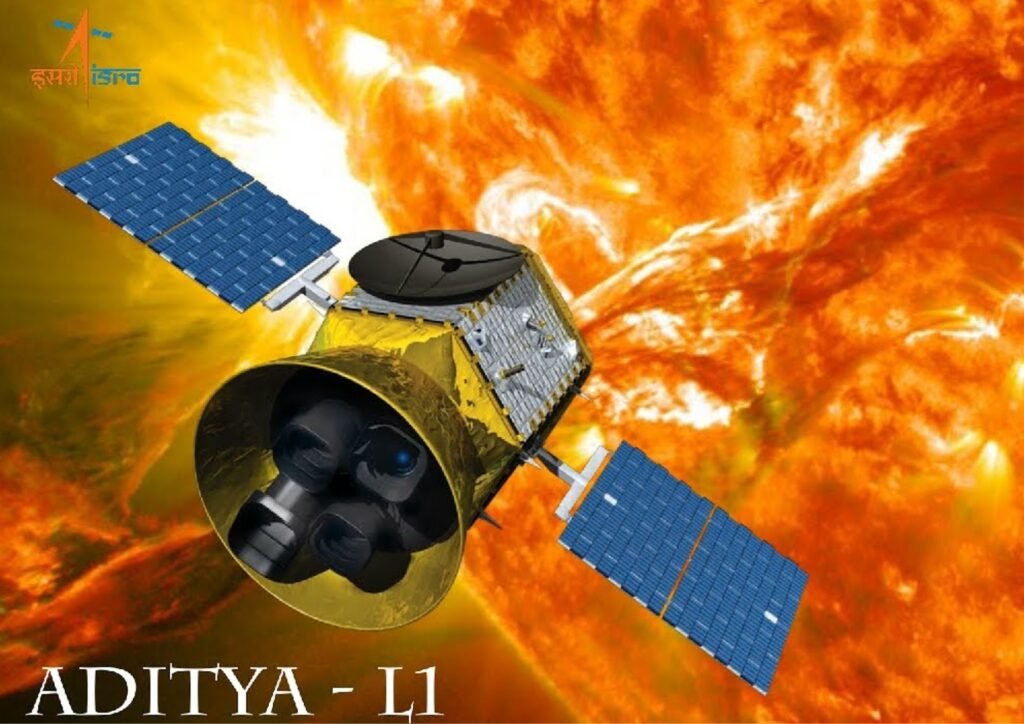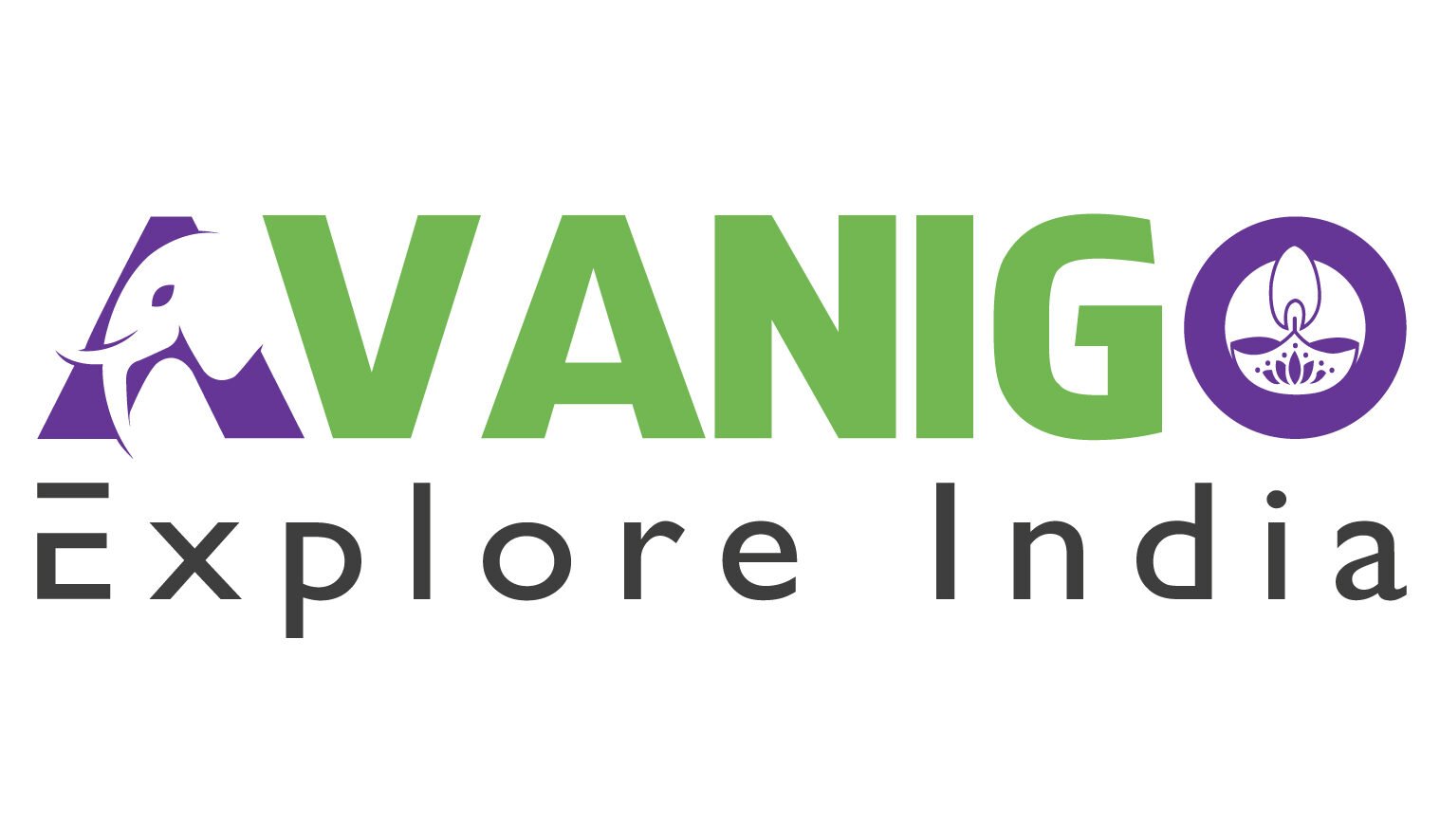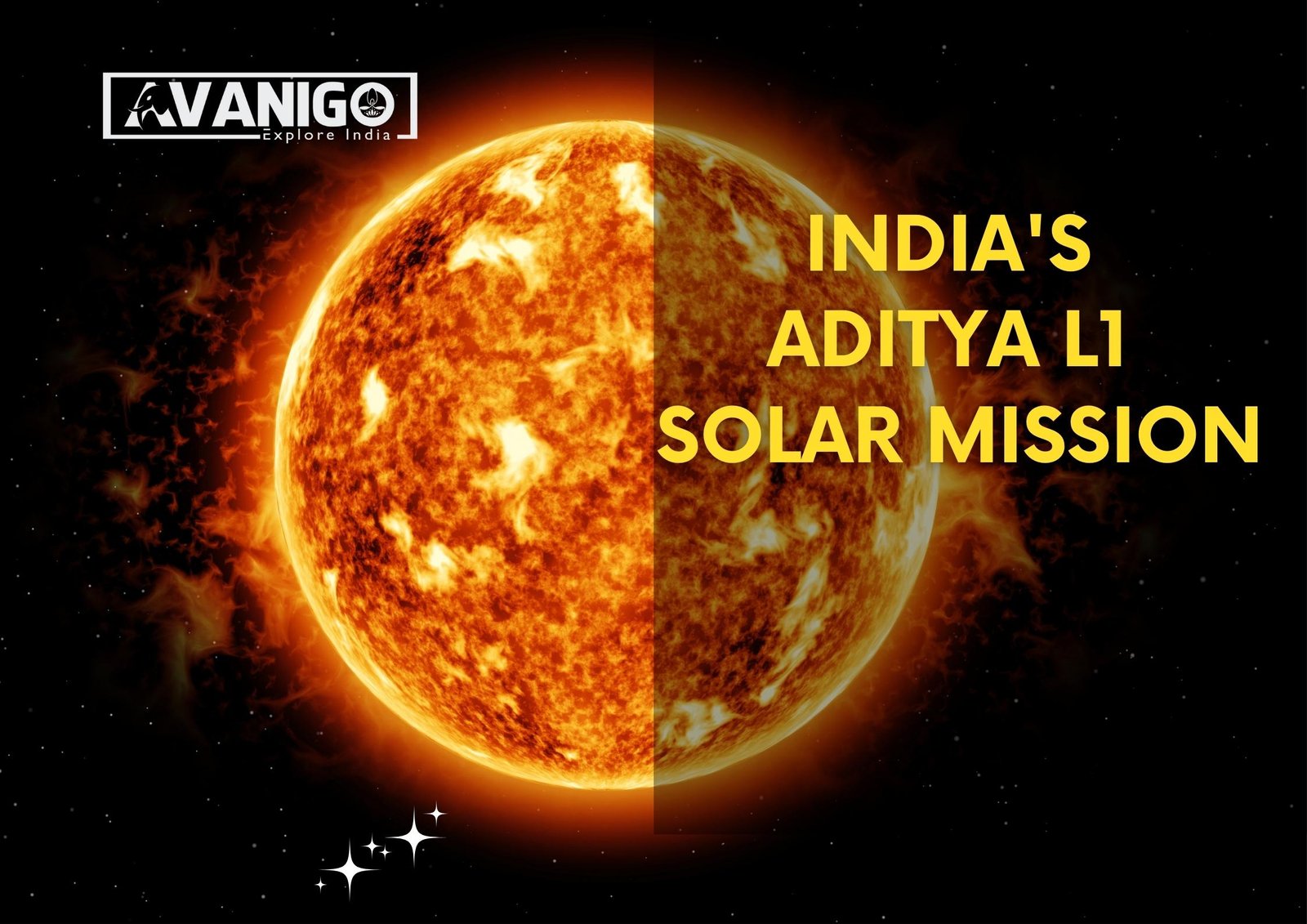Our Sun, the primordial energy source that lights up our skies and fuels life on Earth, has captivated humanity since immemorial. This glowing orb in our daytime skies has inspired mythologies, spiritual traditions, and scientific quests across civilizations.
As the closest star to our planet, the Sun provides a unique opportunity to examine the workings of stars up close. However, its complex dynamics and intensely energetic outbursts still confound researchers. To unravel the Sun’s many mysteries, ISRO is undertaking its most ambitious solar exploration endeavour yet – the Aditya L1 solar mission.
Quick Navigation
What is the Aditya L1 Solar Mission?
The Aditya L1 solar mission marks India’s first foray into a dedicated sun-studying space observatory. Named after the eminent Indian astronomer Aditya, this spacecraft will be positioned in a halo orbit around the L1 Lagrange point of the Sun-Earth system. Lagrange points are unique positions in space where the gravitational forces of two large orbiting bodies like the Sun and Earth interact to create equilibrium zones.
Out of the five Lagrange points, L1 offers an unparalleled vantage point for solar observations. About 1.5 million kilometres from Earth towards the Sun, L1 provides a continuous view of our star unimpeded by eclipses. Aditya L1’s positioning at this sweet spot will facilitate round-the-clock solar monitoring, helping ISRO solar system exploration mysteries that have endured for decades.
Also Read: The Complete Story of Chandrayaan-3
Why is ISRO Sending a Spacecraft to Study the Sun?
As the energy source that governs our solar system, the Sun wields immense influence over planetary environments. Its periodic storms and eruptions spew clouds of energetic particles that can impact satellite operations, Astronaut safety, power grids and radio communications – disrupting technologies we depend on. Additionally, understanding the solar cycle and activity has implications for climate change and agriculture. By closely observing the Sun, ISRO’s Sun Mission will help better predict space weather events and mitigate their effects.
Our star also offers valuable insights into the workings of the stellar nurseries in our galaxy and beyond. As the closest star, the Sun is a perfect lab for examining the dynamics of plasma, magnetic fields, fusion reactions and more – which cannot be recreated on Earth. ISRO solar system exploration findings will help fill crucial gaps in our understanding of stars across the cosmos.
Why is the Aditya L1 Solar Mission Important?
Aditya L1 solar mission heralds a new era in ISRO solar system exploration undertakings. It will be the country’s first venture into studying the Sun from space. The ISRO’s Sun Mission is poised to answer key questions about our star that have endured over decades, unresolved by previous efforts.
Specifically, Aditya L1 solar mission aims to probe mysteries like:
- The corona heating problem: Why is the Sun’s outer atmosphere hotter than its surface?
- Triggering of solar storms: What causes coronal mass ejections?
- Acceleration of the solar wind: What drives the supersonic solar wind?
- Onset of flares: What triggers these intense bursts of radiation?
- The solar dynamo: How does the 22-year magnetic cycle work?
Additionally, ISRO’s sun mission will provide crucial real-time data on solar storms and activity. This will help improve space weather predictions to safeguard vital Earth infrastructure and space infrastructure.
By harnessing ISRO’s decades of expertise in payload development, mission planning and space exploration, Aditya L1 is poised to uncover exciting revelations about our Sun that could reshape our understanding of stars.
Also Read: The Story of Indian Tricolor Flag
The Spacecraft’s Scientific Payload
Aditya L1 is equipped with a specially designed ensemble of seven instruments to fulfil its ambitious science goals. They are optimized to observe the Sun across multiple wavelengths and uncover crucial data:
- Visible Emission Line Coronagraph (VELC): Will image the Sun’s corona in visible light, shedding light on the corona heating problem.
- Solar Ultraviolet Imaging Telescope (SUIT): Will study the chromosphere in ultraviolet, aiming to understand solar activity.
- Aditya Solar Wind Particle Experiment (ASPEX): This will examine the properties of the solar wind, a stream of charged particles from the Sun.
- Plasma Analyser Package for Aditya (PAPA): Will carry out in-situ measurements of solar wind particles near L1.
- Solar Low Energy X-ray Spectrometer (SoLEXS): Will map the upper photosphere and transition region in soft X-rays.
- High Energy L1 Orbiting X-ray Spectrometer (HEL1OS): Will observe the corona in X-rays to shed light on coronal heating.
- Magnetometer: This will measure the magnitude and nature of the magnetic field inhabiting the halo orbit around L1.
Together, these payloads will provide comprehensive real-time data on our star across diverse regions and wavelengths – enabling groundbreaking discoveries.

The Spacecraft’s Ambitious Journey
The Aditya L1 spacecraft will begin its voyage to the Sun aboard a PSLV rocket launched from Sriharikota, India. After separation, it will undertake crucial orbit-raising maneuvers using an onboard propulsion system. This will place it in an elliptical orbit whose farthest point stretches beyond Earth’s sphere of influence.
Once this threshold is crossed, the spacecraft will enter a cruise phase for months. Mid-course corrections will fine-tune its trajectory until the craft arrives at the L1 halo orbit. The voyage is estimated to last around 4 months, covering over 1.5 million kilometres.
Upon arriving at L1, the spacecraft must delicately manoeuvre into the halo orbit without overshooting. After successful insertion and checkout, Aditya L1’s payloads will switch on – initiating round-the-clock solar observations for several years. The craft will beam a torrent of novel data back to Earth that could transform our stellar knowledge.
Expanding Solar Horizons Through Global Collaboration
As India readies the Aditya L1 mission, it proudly follows in the footsteps of visionary international solar studies like the pioneering Pioneer probes, the Solar and Heliospheric Observatory (SOHO), and the Parker Solar Probe more recently. This mission of ISRO solar system exploration underscore the universal quest to unravel the complex dynamics of the Sun that shapes our cosmic neighbourhood.
ISRO’s Sun Mission promises to build on this inspirational global legacy in the next few years. Its observations will help create a fuller picture of solar phenomena when combined with data from international collaborators like Solar Orbiter (ESA) and Parker Solar Probe (NASA). With the worldwide solar physics community, ISRO stands at the cusp of trailblazing discoveries that could unlock the secrets of stars across the cosmos.
FAQs
- What kind of space weather events does the Sun generate?
The Sun can produce solar flares, coronal mass ejections (CMEs) and high-speed solar wind streams that can impact the near-Earth environment. Large CMEs and high solar wind speeds can trigger geomagnetic storms around Earth, damaging satellite operations, communications and power grids.
- How does space weather affect Earth?
Energetic particles from solar storms can damage satellite electronics, leading to operational failures. Increased atmospheric drag during storms hastens the orbital decay of satellites. Geomagnetic storms can induce currents in power grids, damaging transformers. Radio communications get blacked out due to increased ionization in the upper atmosphere.
- How will Aditya L1’s observations be useful in the long term?
Aditya L1 solar mission will provide an uninterrupted, long-term database of solar observations over its multiple-year mission lifespan. This will allow the development of multi-year studies and models that can uncover long-term cyclic variations in the Sun.
- How will the findings complement other international solar missions?
Aditya L1’s observations across multiple wavelengths will complement data from missions like Parker Solar Probe (in-situ solar wind), Solar Orbiter (remote sensing) and SOHO (solar corona). This synergy will enable deeper insights into solar phenomena.
At AvaniGo, we are passionate about India and its mesmerizing culture. We intend to share the greatness of Indian culture through our articles. To learn more about us and contribute to our website, email us at hello@avanigo.com.

